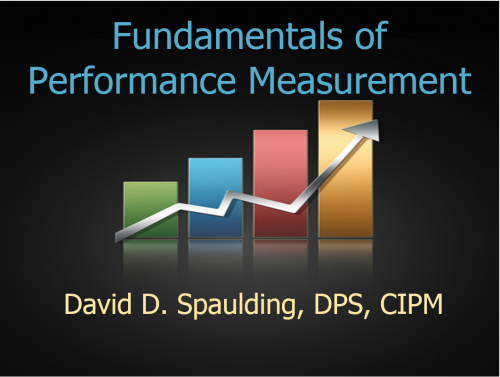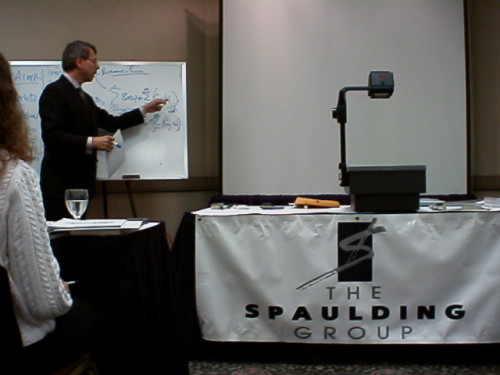
Our Fundamentals of Performance Measurement class, formerly known as Introduction to Performance Measurement, has undergone a pretty significant “facelift,” so to speak. It has taken me quite some time to get it done, although one is never actually ever done with a class like this, as there’s always more than can be added.
We’ve been teaching this class for nearly 18 years, and much has been done to enhance it over this time. For example, initially, I used an overhead projector, with “transparencies,” which were quite expensive to produce. They were pretty basic: just black letters and numbers: nothing exciting.

I vividly recall being at an event with my old friend Jamie Hollis, CFA, when he was beginning to use PowerPoint from his computer, rather than print slides (which were also quite common at one time) or transparencies, as I did. Unlike these physical media, by going directly from the computer you could do much more, including making changes dynamically and introduce color, at no extra cost.
My initial PowerPoint presentations were like those of many other folks: just black lettering with a white background. Over time, I began to get pretty aggressive with clipart and colors.
Fundamentals of Performance Measurement: not just a prettier face
Well, our newly revamped Fundamentals of Performance Measurement is a whole new step for me. From a visual standpoint, I think it’s far superior to what I’ve done in the past. And, from a content perspective, a fair amount of new material has been added. For example, the rates of return section has been expanded, and now includes much more on the internal rate of return, which is quite fitting, given (a) my undying love for the measure and (b) its growth in our industry.
I’ll be teaching the class for the first time this week, as an in-house class for Wedge Capital Management in North Carolina. In two weeks (May 19-20) I’ll be teaching an “open enrollment” class in New Brunswick, NJ.
We recently had our second Performance Measurement Forum meeting for our APAC (Asia) chapter in Hong Kong. I was impressed with the way our speakers had put their materials together, including Marc Rubenfeld, CIPM of Eagle. John Longo, PhD, CFA, Chief Investment Officer for Acertus Capital Management and professor at Rutgers University, has spoken at our Performance Measurement, Attribution & Risk (PMAR) conferences for the past several years, and I’ve always been impressed with the way he puts his slides together.
Yes, putting some pizzazz into the presentation can cost a bit more and take more time, but the results can be quite impressive, we believe.
I’ve heard folks use dining as a metaphor for public speaking. That is, while we may comment about how good the meal tastes, we will often also remark about its presentation. For speaking, the parallel would be its content, delivery, and, again, presentation. We strive, on a fairly continuous basis, to keep our materials fresh. Anthony Robbins, the motivational speaker, introduced me to the concept of CANI several years ago: Constant And Never-ending Improvement. That’s essentially the way we look at our training classes, which have undergone some pretty significant changes at times in the past, but this is perhaps the most drastic so far.
Now, I have to do the same with our Performance Measurement Attribution class!
Want to sign up for the class, or have questions about in-house training (which can be customized to your needs)? Please contact Patrick Fowler (PFowler@tsgperformance.com) or Christopher Spaulding (CSpaulding@tsgperformance.com).
